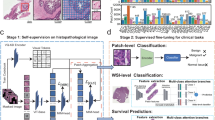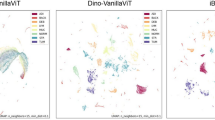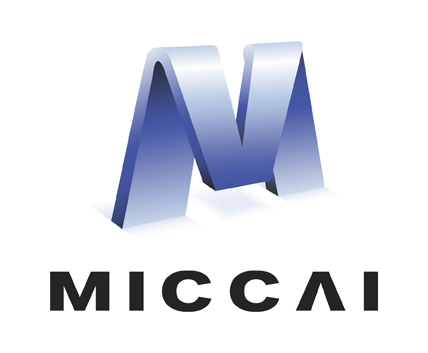Abstract
The large-scale pretrained models from terabyte-level (TB) data are now broadly used in feature extraction, model initialization, and transfer learning in pathological image analyses. Most existing studies have focused on developing more powerful pretrained models, which are increasingly unscalable for academic institutes. Very few, if any, studies have investigated how to take advantage of existing, yet heterogeneous, pretrained models for downstream tasks. As an example, our experiments elucidated that self-supervised models (e.g., contrastive learning on the entire The Cancer Genome Atlas (TCGA) dataset) achieved a superior performance compared with supervised models (e.g., ImageNet pretraining) on a classification cohort. Surprisingly, it yielded an inferior performance when it was translated to a cancer prognosis task. Such a phenomenon inspired us to explore how to leverage the already trained supervised and self-supervised models for pathological survival analysis. In this paper, we present a simple and low-cost joint representation tuning (JRT) to aggregate task-agnostic vision representation (supervised ImageNet pretrained models) and pathological specific feature representation (self-supervised TCGA pretrained models) for downstream tasks. Our contribution is in three-fold: (1) we adapt and aggregate classification-based supervised and self-supervised representation to survival prediction via joint representation tuning, (2) comprehensive analyses on prevalent strategies of pretrained models are conducted, (3) the joint representation tuning provides a simple, yet computationally efficient, perspective to leverage large-scale pretrained models for both cancer diagnosis and prognosis. The proposed JRT method improved the c-index from 0.705 to 0.731 on the TCGA brain cancer survival dataset. The feature-direct JRT (f-JRT) method achieved \(60\times \) training speedup while maintaining 0.707 c-index score.
Access this chapter
Tax calculation will be finalised at checkout
Purchases are for personal use only
Similar content being viewed by others
References
Azizi, S., et al.: Big self-supervised models advance medical image classification. In: Proceedings of the IEEE/CVF International Conference on Computer Vision, pp. 3478–3488 (2021)
Bao, H., Dong, L., Wei, F.: Beit: bert pre-training of image transformers. arXiv preprint arXiv:2106.08254 (2021)
Bar, Y., Diamant, I., Wolf, L., Greenspan, H.: Deep learning with non-medical training used for chest pathology identification. In: Medical Imaging 2015: Computer-Aided Diagnosis, vol. 9414, p. 94140V. International Society for Optics and Photonics (2015)
Bardes, A., Ponce, J., LeCun, Y.: Vicreg: Variance-invariance-covariance regularization for self-supervised learning. arXiv preprint. arXiv:2105.04906 (2021)
Chen, R.J., et al.: Pathomic fusion: an integrated framework for fusing histopathology and genomic features for cancer diagnosis and prognosis. IEEE Trans. Med. Imaging 41, 757–770 (2020)
Ciga, O., Xu, T., Martel, A.L.: Self supervised contrastive learning for digital histopathology. Mach. Learn. Appl. 7, 100198 (2021)
David, L., et al.: Applications of deep-learning in exploiting large-scale and heterogeneous compound data in industrial pharmaceutical research. Front. Pharmacol. 10, 1303 (2019)
He, K., Zhang, X., Ren, S., Sun, J.: Deep residual learning for image recognition. In: Proceedings of the IEEE Conference On Computer Vision And Pattern Recognition, pp. 770–778 (2016)
Huo, Y., Deng, R., Liu, Q., Fogo, A.B., Yang, H.: AI applications in renal pathology. Kidney Int. 99(6), 1309–1320 (2021)
Jarrett, D., Yoon, J., van der Schaar, M.: Dynamic prediction in clinical survival analysis using temporal convolutional networks. IEEE J. Biomed. Health Inform. 24(2), 424–436 (2019)
Kather, J.N., et al.: Predicting survival from colorectal cancer histology slides using deep learning: a retrospective multicenter study. PLoS Med. 16(1), e1002730 (2019)
Kieffer, B., Babaie, M., Kalra, S., Tizhoosh, H.R.: Convolutional neural networks for histopathology image classification: training vs. using pre-trained networks. In: 2017 Seventh International Conference on Image Processing Theory, Tools and Applications (IPTA), pp. 1–6. IEEE (2017)
Kim, Y.J., et al.: PAIP 2019: liver cancer segmentation challenge. Med. Image Anal. 67, 101854 (2021)
Krizhevsky, A., Sutskever, I., Hinton, G.E.: Imagenet classification with deep convolutional neural networks. In: Advances in Neural Information Processing Systems, vol. 25 (2012)
Li, R., Yao, J., Zhu, X., Li, Y., Huang, J.: Graph CNN for survival analysis on whole slide pathological images. In: Frangi, A.F., Schnabel, J.A., Davatzikos, C., Alberola-López, C., Fichtinger, G. (eds.) MICCAI 2018. LNCS, vol. 11071, pp. 174–182. Springer, Cham (2018). https://doi.org/10.1007/978-3-030-00934-2_20
Liu, Q., et al.: SimTriplet: simple triplet representation learning with a single GPU. In: de Bruijne, M., et al. (eds.) MICCAI 2021. LNCS, vol. 12902, pp. 102–112. Springer, Cham (2021). https://doi.org/10.1007/978-3-030-87196-3_10
Lu, Y., Jha, A., Huo, Y.: Contrastive learning meets transfer learning: a case study in medical image analysis. arXiv preprint. arXiv:2103.03166 (2021)
Mobadersany, P., et al.: Predicting cancer outcomes from histology and genomics using convolutional networks. Proc. Natl. Acad. Sci. 115(13), E2970–E2979 (2018)
Mormont, R., Geurts, P., Marée, R.: Multi-task pre-training of deep neural networks for digital pathology. IEEE J. Biomed. Health Inform. 25(2), 412–421 (2020)
Peikari, M., Salama, S., Nofech-Mozes, S., Martel, A.L.: A cluster-then-label semi-supervised learning approach for pathology image classification. Sci. Rep. 8(1), 1–13 (2018)
Rai, T., et al.: Can imagenet feature maps be applied to small histopathological datasets for the classification of breast cancer metastatic tissue in whole slide images?. In: Medical Imaging 2019: Digital Pathology, vol. 10956, pp. 191–200. SPIE (2019)
Simonyan, K., Zisserman, A.: Very deep convolutional networks for large-scale image recognition (2015)
Tang, B., Li, A., Li, B., Wang, M.: Capsurv: capsule network for survival analysis with whole slide pathological images. IEEE Access 7, 26022–26030 (2019)
Tellez, D., van der Laak, J., Ciompi, F.: Gigapixel whole-slide image classification using unsupervised image compression and contrastive training (2018)
Thongprayoon, C., et al.: Promises of big data and artificial intelligence in nephrology and transplantation (2020)
Tomczak, K., Czerwińska, P., Wiznerowicz, M.: The cancer genome atlas (TCGA): an immeasurable source of knowledge. Contemp. Oncol. 19(1A), A68 (2015)
Uno, H., Cai, T., Pencina, M.J., D’Agostino, R.B., Wei, L.J.: On the c-statistics for evaluating overall adequacy of risk prediction procedures with censored survival data. Stat. Med. 30(10), 1105–1117 (2011)
Wang, X., et al.: TransPath: transformer-based self-supervised learning for histopathological image classification. In: de Bruijne, M., et al. (eds.) MICCAI 2021. LNCS, vol. 12908, pp. 186–195. Springer, Cham (2021). https://doi.org/10.1007/978-3-030-87237-3_18
Yang, P., Hong, Z., Yin, X., Zhu, C., Jiang, R.: Self-supervised visual representation learning for histopathological images. In: de Bruijne, M., et al. (eds.) MICCAI 2021. LNCS, vol. 12902, pp. 47–57. Springer, Cham (2021). https://doi.org/10.1007/978-3-030-87196-3_5
Yao, J., Zhu, X., Jonnagaddala, J., Hawkins, N., Huang, J.: Whole slide images based cancer survival prediction using attention guided deep multiple instance learning networks. Med. Image Anal. 65, 101789 (2020)
Zhu, X., Yao, J., Huang, J.: Deep convolutional neural network for survival analysis with pathological images. In: 2016 IEEE International Conference on Bioinformatics and Biomedicine (BIBM), pp. 544–547. IEEE (2016)
Author information
Authors and Affiliations
Corresponding author
Editor information
Editors and Affiliations
Rights and permissions
Copyright information
© 2022 The Author(s), under exclusive license to Springer Nature Switzerland AG
About this paper
Cite this paper
Liu, Q. et al. (2022). Leverage Supervised and Self-supervised Pretrain Models for Pathological Survival Analysis via a Simple and Low-cost Joint Representation Tuning. In: Xu, X., Li, X., Mahapatra, D., Cheng, L., Petitjean, C., Fu, H. (eds) Resource-Efficient Medical Image Analysis. REMIA 2022. Lecture Notes in Computer Science, vol 13543. Springer, Cham. https://doi.org/10.1007/978-3-031-16876-5_8
Download citation
DOI: https://doi.org/10.1007/978-3-031-16876-5_8
Published:
Publisher Name: Springer, Cham
Print ISBN: 978-3-031-16875-8
Online ISBN: 978-3-031-16876-5
eBook Packages: Computer ScienceComputer Science (R0)





